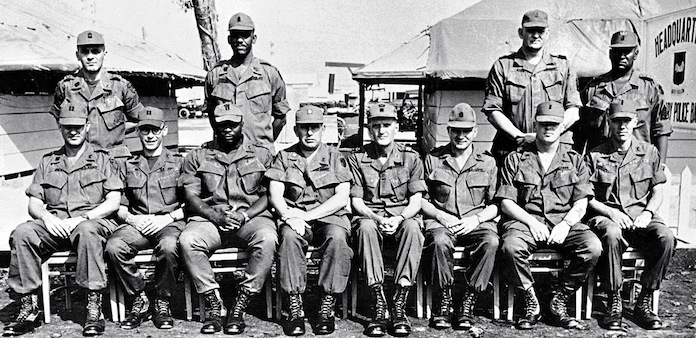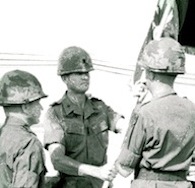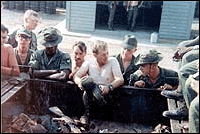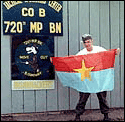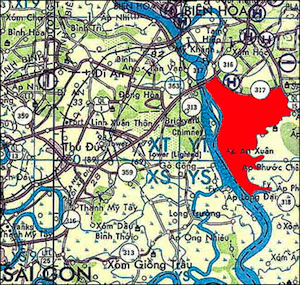Before the next 24 hours ended it would be a night and day as one unidentified officer from brigade would later say- “With B Company kicking ass and taking names!”
Since fall of 1968, the way stations and base camps of the (Dong Nai) VC Main Force Regiment, 5th NVA Division, were marshaled in and around the area of Big Hill-38, Hill-42, and south and west of Phuoc Cang and Long Khanh villages. According to MACV intelligence reports from August 1968 the battalion had been busy in the southern Long Khan and central Bien Hoa province areas harassing ARVN and Allied forces.
Since fall of 1968, the way stations and base camps of the (Dong Nai) VC Main Force Regiment, 5th NVA Division, were marshaled in and around the area of Big Hill-38, Hill-42, and south and west of Phuoc Cang and Long Khanh villages. According to MACV intelligence reports from August 1968 the battalion had been busy in the southern Long Khan and central Bien Hoa province areas harassing ARVN and Allied forces.
Their parent unit the 5th NVA Division had been operating in War Zones C and D in the CTZ III area for years. Many of the combat support and convoy escort missions assigned to the 720th from 1966 through 1969 were to assist and provision the U.S. and ARVN infantry units engaging them. The 274th was also the unit that attacked and briefly occupied Ho Nai and the Widows Village north of Long Binh Post during the 1968 Tet Offensive.





